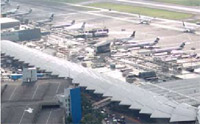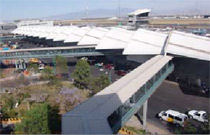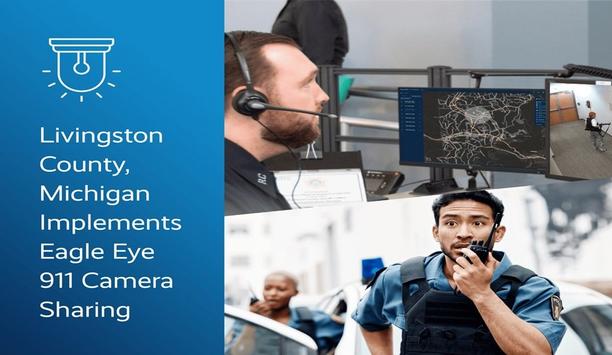The International Airport of Mexico City (AICM) is Latin America's busiest airport, and one of the world's 30 most active airports in terms of passengers, operations and cargo. Located six miles east of Mexico City, the airport is Mexico's primary international and domestic hub, with direct flights to more than 300 worldwide destinations. The airport boasts an impressive array of modern facilities including restaurants, shops, hotel reservation desks, tourist information, ATMs, banks, foreign exchange, business facilities and a post office.
Further increasing the complexity of the AICM's operation, the airport is undergoing major construction work, including building new concourses and a new terminal (Terminal 2). Once built, the new facilities are expected to increase airport passenger capacity by nearly 50%. This will enable the airport to handle an additional 16 million passengers per year, up from the current 32 million travellers who pass through.
But with all this activity, the issue of access control is a key consideration. With nearly 340,000 flights in a year, and about 20,000 staff on site, the AICM has significant access control requirements. As a regional leader, the AICM turned to HID Global, a leading manufacturer in the access control industry, to help address its needs.
Access control needs
When it was time for the AICM to consider a system upgrade, Manager of Airport Identification, Enrique De la Mora, a member of AICM's security staff, worked with integrator Ernesto Ibarra from IR Systems S.A. de C.V. to define the scope of AICM's access control needs. In evaluating various offerings, the airport's security was dependent on the following considerations:
- Size and complexity: With AICM's size, amenities and complexity, controlling access to restricted areas would be a massive undertaking.
- Multi-factor authentication:Concerned with vandalism and identity theft, the airport identified that it would need some type of multi-factor authentication to maintain strict access control to restricted areas like VIP rooms and operations areas. AICM management had to ensure that the "right" people would get in, but the "wrong" people would be kept out.

AICM management selected HID for Global its innovative accesscontrol solution to meet its needs
- Secure credentials: Significant authentication capabilities were needed at the credential level. The credentials chosen by the airport would need to be counterfeit proof, ensuring the integrity of the card issuance process.
- Scalable solution: Credential issuance would also need to be a fluid, yet secure, process. The credential issuance procedure would have to be scalable to address new locations and employee status. With the expected opening of a new terminal, AICM management wanted to ensure that it would only need to provide badges for each employee once, for all facilities.
- Latest technology: De la Mora and AICM were ready to upgrade to the latest technology. "We have been using an integrated 125 kHz proximity-based access control system, powered by HID cards and readers, since 1998. The AICM decided the time and needs were right to move ahead to the most advanced, best-of-class system," commented De la Mora.
Having determined those needs and rationale, the AICM turned to HID Global for its innovative applications of technology and expertise. To address its mission-critical requirements, AICM management determined that cards and readers from HID Global were the right solution.
How the HID Global solution addressed AICM's need
Size and complexity
Given the number of airport staff and potential intruders, De la Mora suggests that efficient operations surrounding identity verification and clearance to the airport's restricted areas would truly present a logistical challenge without the V-Smart iCLASS reader electronic access control system. The airport's large card user base, including employees, airline staff, cleaning and maintenance staff, and luggage transporters, suited the use of a biometric solution for access control.
Multi-factor authentication
For high security at this vital site, users of the new access control system present an identity credential to the reader, then have their fingerprint read by the Bioscrypt device, to authenticate the cardholder's identity. This makes it nearly "impossible for a person to enter the restricted areas with someone else's card," affirmed Enrique De la Mora, Manager of AICM's Airport Identification.
Secure credentials
 |
| The airport has deployed over 60 Bioscrypt V-Smart iCLASS readers for facility security |
The credentials chosen by the airport employ the latest security features, including extra secure printing features. Credentials feature a colour photograph of the user, his/her name, title, employer, personal date of use and other data printed on the card. The card also includes a colour code that identifies the card carrier's functional area, with a holographic over-laminate for increased security.
Scalable solution
The Management of Airport Identification issues between 25 and 50 permanent credentials and about 200 temporary credentials on a daily basis. It expects its card issuance to increase when Terminal 2 operations begin (anticipated November 2006). Current cardholders can use the same identity credential to go from the airport's Terminal 1 to the new Terminal 2. The administration will purchase an additional 51 Vsmart iCLASS readers to manage access control when the new terminal comes on line.
The new system works
With nearly 20,000 cards in use, issued to a variety of personnel including airport employees, airline staff, airport cleaning and maintenance staff, and luggage transporters, the biometric solution allows precise access control to restricted areas, virtually eliminating the possibility of counterfeiting.
To date, the airport has deployed over 60 Bioscrypt V-Smart iCLASS readers for facility security. The fingerprint readers included HID iCLASS 13.56 MHz read/write contactless smart card technology, to restrict access to high profile sites within the airport. With widespread use of the iCLASS credential, there is also room in the future for the IAMC to consider implementation of other applications based on the use of the existing HID iCLASS credential.
In response to AICM's anticipation of illegal intrusion threats and other
 |
| HID Global aims to provide the ideal solution for transportation security |
criminal activities that could go on at the airport, the HID Global solution is ideal for AICM's access control needs. Using V-Smart iCLASS readers and benefiting from the advantages of HID's Corporate 1000 program, card holders can use the same identity credential to move from the airport's Terminal 1 to Terminal 2.
Conclusion
Through its people, processes and technologies, airport patrons (whether tourists, business travellers, or freight transporters) can continue to rely on the AICM's massive international network of commerce, generating enormous opportunities for Mexico's economy. A secure international airport enables the country to participate more fully in the social and economic benefits of the North American Free Trade Agreement (NAFTA) as well as access to global trading partners.
HID Global aims to provide the ideal solution for transportation security. Occupying the access control "layer" of security, IACM is seeing the benefits of HID and Bioscrypt's advanced fingerprint technology solution as it implements counterterrorism security measures.












